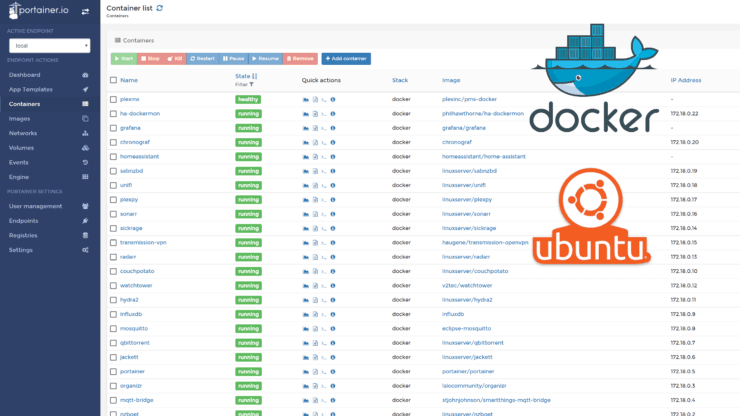

- #Monit docker containers how to
- #Monit docker containers install
- #Monit docker containers update
- #Monit docker containers upgrade
- #Monit docker containers code
To Update the Repository,Ĭreate a Directory, say monitoring mkdir monitoring cd monitoring/ vim docker-compose.yml
#Monit docker containers install
Login to your Linux machine, Update the repository and Install Docker and Docker Compose. Skedler offers the most powerful, flexible and easy-to-use data monitoring solution that companies use to exceed customer SLAs, achieve compliance, and empower internal IT and business leaders. It Stands for Container Advisor and used to aggregate and process all the metrics for the running Containers Skedler Reports - Automate actionable reports CAdvisor - Monitoring metrics for the running Containers. Prometheus exporter for Windows machines, using the WMI (Windows Management Instrumentation).


It allows measuring various machine resources such as memory, disk, and CPU utilization WMI Exporter - Monitoring Windows host metrics Node Exporter is a Prometheus exporter for hardware and OS metrics with pluggable metric collectors. Node Exporter - Monitoring Linux host metrics It is now a standalone open source project and maintained independently of any company. Since its inception in 2012, many companies and organizations have adopted Prometheus, and the project has a very active developer and user community. Prometheus is an open-source system monitoring and alerting toolkit originally built at SoundCloud. Prometheus - Event monitoring and alerting With Grafana, one can also set alerts for metrics that require attention, apart from creating, exploring, and sharing dashboards with their team and fostering a data-driven culture. Grafana equips users to query, visualize, and monitor metrics, no matter where the underlying data is stored. Skedler Reports -Automating actionable reports Grafana - Analytics & monitoring solution for database Wmi-Exporter- Monitoring Windows host metricsĬAdvisor- Monitoring metrics for the running Containers. Node-Exporter- Monitoring Linux host metrics Prometheus- Event monitoring and alerting Grafana- Database for Analytics & monitoring solution
#Monit docker containers how to
Here we'll take a look at how to Monitor servers (and even Docker Containers running inside the Server) using Grafana, Prometheus, Node Exporter, CAdvisor and Skedler Reports. Response time lag, if any must be addressed swiftly. To achieve this, one has to monitor the system metrics like CPU, memory, network, and disk. The underlying system’s availability and health must be maximized continually. Though, the script can be improved to use docker inspect instead of docker status to use advantages of HEALTCHECK command.Infrastructure monitoring is the basis for application performance management. The script below, being quite dumb, allows you to catch most of the failures and it becomes very easy to support any number of containers. Even when HEALTHCKECK instruction is set, it will send no notifications out of the box, this is up to user. Sometimes this can be either impossible or be a difficult task, e.g. In order to use HEALTHCKECK instruction for a container, one should modify its Docker file.

As docker documentation says: “This can detect cases such as a web server that is stuck in an infinite loop and unable to handle new connections, even though the server process is still running”. Docker healthcheckĭocker has a HEALTHCHECK instruction, which can test that your container is still working.
#Monit docker containers code
Monit executes the script on a regular basis and if return code is not zero, sends alert notification to you (via email or other communication means). If some container names missing, script returns non-zero error code. The basic idea is fairly simple - you create a shell script which asks docker for a list of running containers. The best and well known choice I come up with is the monit. if it is your wife, the WAF of your home automation solution may be down to about zero.Īpparently you cannot use home-assistant automation rules to monitor its availability so we need something which may work independently. It is okay if you will be the one who noticed the interruption first. The most often case for me was when a container has not been set up for automatic restart and after host is restarted (or docker daemon restarted) the container remained offline. In some circumstances one or multiple containers may stop working or even come into an infinite loop of restarting attempts. zerotier-one for a private VPN or distinct mosquitto broker. On top of that you may have your own containers with additional software, e.g.
#Monit docker containers upgrade
There is a container for home-assistant itself, supervisor container which controls the process of installation and upgrade HA software, one or more dedicated containers for hass.io addons. If you are a happy user of hass.io you probably know that your setup consists of multiple docker containers.


 0 kommentar(er)
0 kommentar(er)
